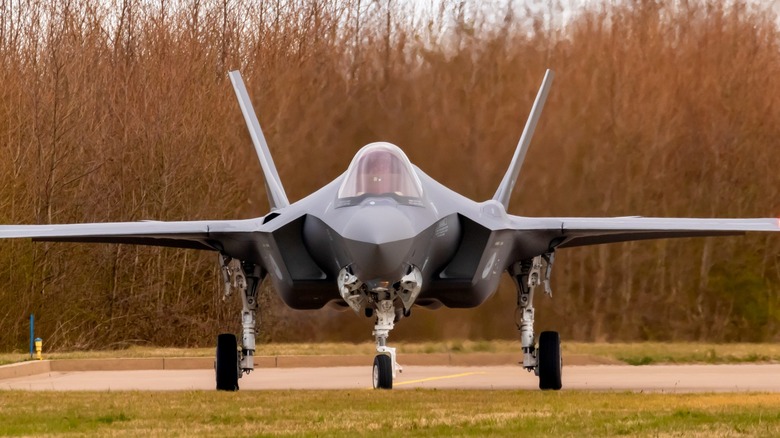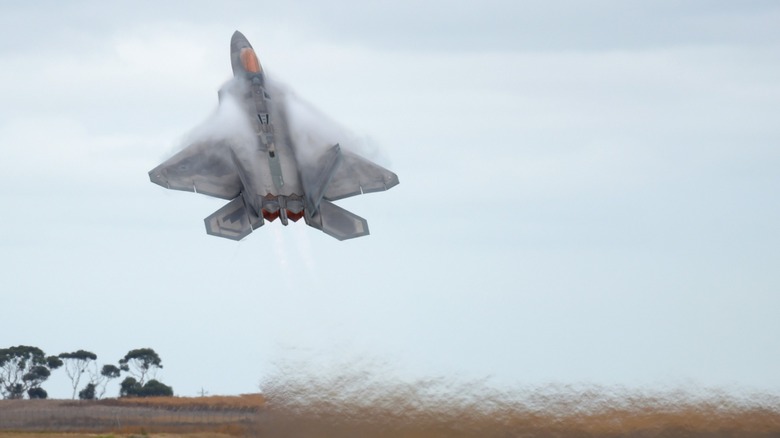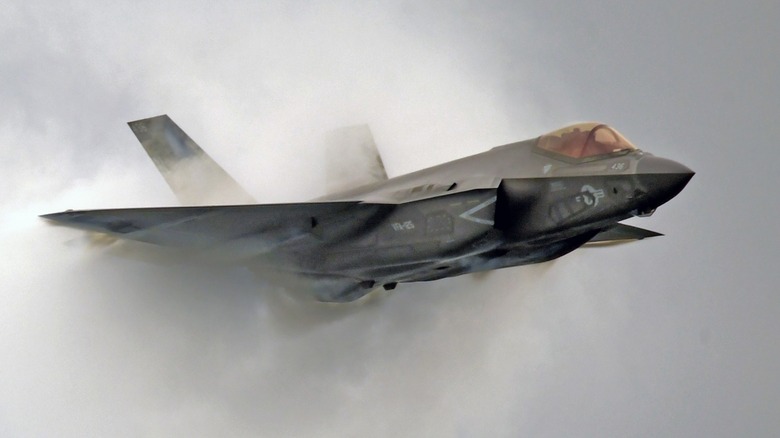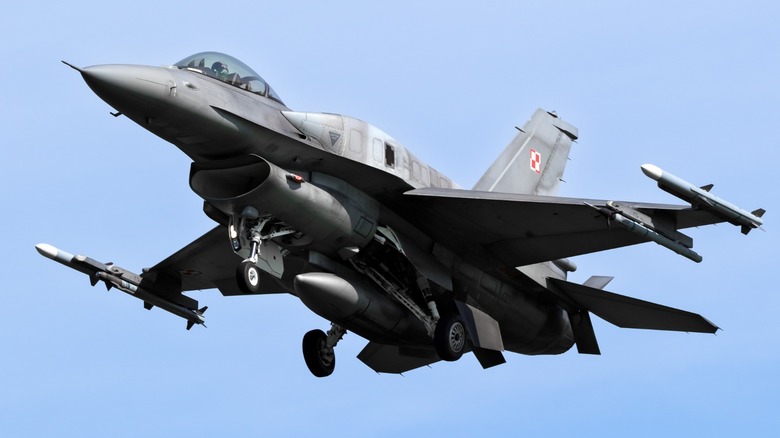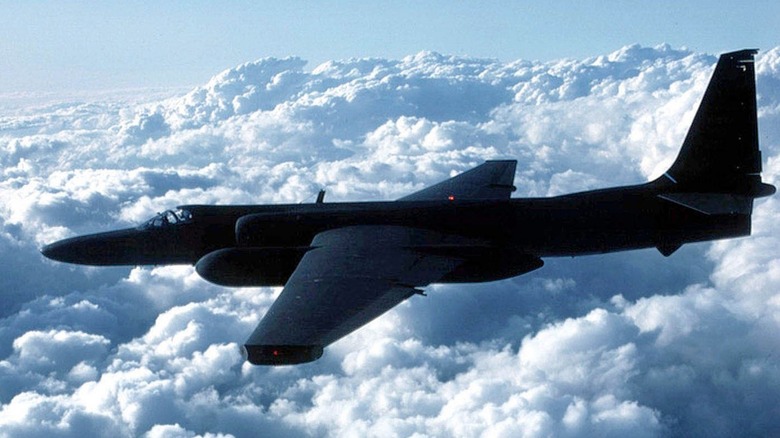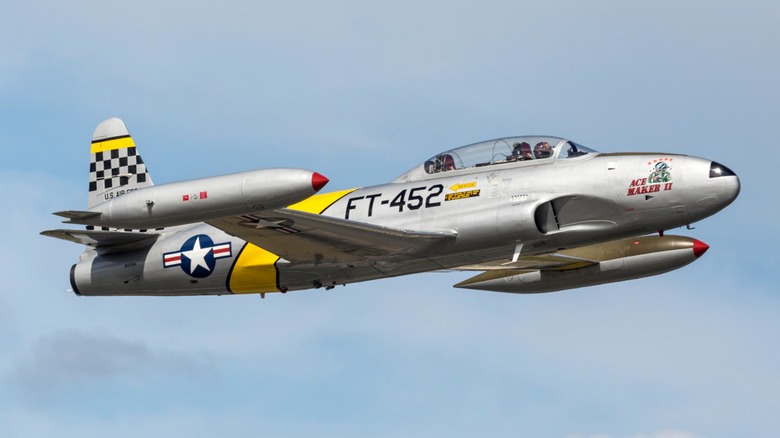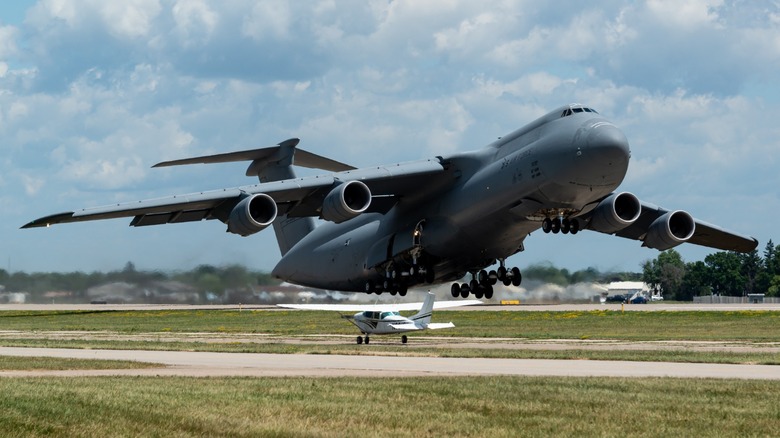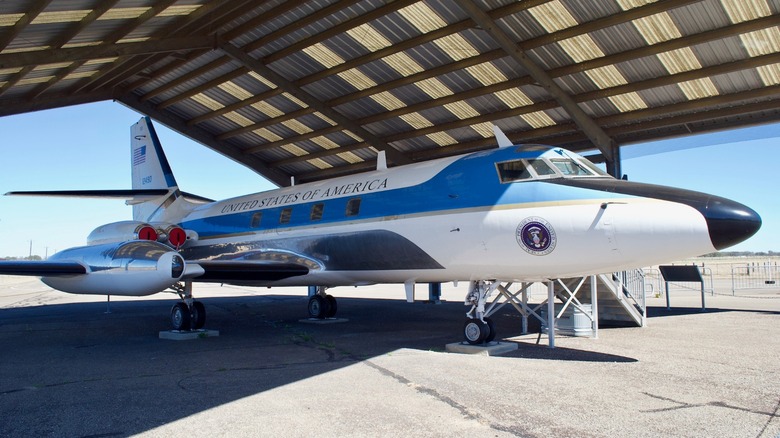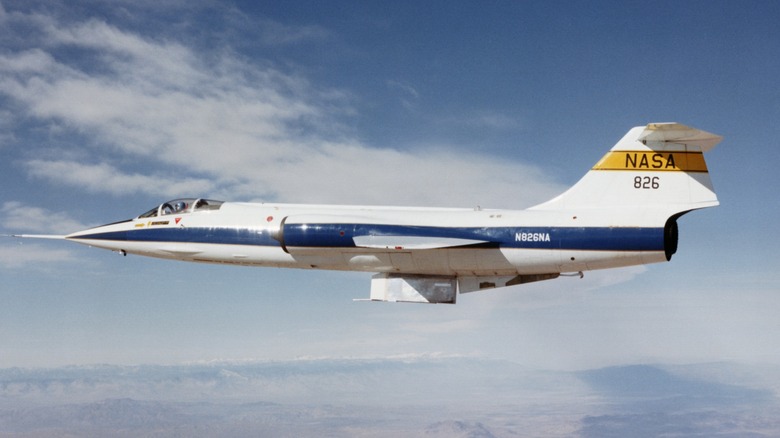8 Of The Best Jets Lockheed Martin Has Ever Manufactured
Loughead Aircraft Manufacturing Company, established in 1912, capitalized on the nascent and growing aviation industry that sprang up almost immediately after the Wright Brothers took flight at Kitty Hawk. The company name was changed to Lockheed Aircraft Company in 1926, just before going bankrupt due to the Great Depression. The company was eventually bought followed by another name change to Lockheed Corporation, succeeded by a period of successful aircraft construction that helped it evolve into one of the world's premier military aviation defense contractors.
World War II allowed Lockheed to excel in fulfilling military contracts, developing some of the machines that proved invaluable to the Allied war effort and eventual victory. Upon the emergence of the jet age, Lockheed found itself at the forefront of jet aircraft development, taking the lead in supplying the United States Air Force with the best aircraft in the skies contributing to the maintaining of balance during the Cold War. Lockheed's Skunk Works advanced design and development arm created sophisticated and highly classified new aircraft under complete secrecy beginning in the 1950s and continues that cutting-edge development today. A March 1995 merger with a long-time manufacturer of weapons systems, Martin Marietta Corporation, created Lockheed Martin, the defense giant we have today.
Some of the finest aircraft used by the United States, its allies, and partners come from Lockheed Martin, including our fastest and most fearsome fighter jets. This is a look at the eight finest models produced by the company to date.
Lockheed Martin F-22 Raptor
Lockheed's first full-production stealth fighter aircraft, the Lockheed Martin F-22 Raptor, surfaced in the late '90s. Entering service in 2003, the F-22 continues in service today as the most advanced direct aerial attack fighter jet in the U.S. fleet. Powering the F-22 are a pair of Pratt and Whitney turbofan engines pushing the aircraft to Mach 2, allowing for extended supersonic flight without afterburners thanks to supercruise, a fuel-efficient method of sustained high-speed flight that facilitates sustained Mach 1.58 flight longer than most, if not all, comparable aircraft. Furthermore, the dual jet engines use thrust vectoring nozzles to aid in turning, making the Raptor among the most agile aircraft in the skies.
When the F-22 entered service, it followed the F-117 Nighthawk and S-2 Spirit stealth aircraft, but was the first multi-role fighter designed with a more traditional airframe adapted to stealth technology. Its primary foreign competitors are the Russian Su-57 Felon and China's Chengdu J-20, however, the F-22 radar cross-section is up to 800 times smaller than the latter and an embarrassing (for Russia) 5,000 times smaller than the former. Many consider the F-22 Raptor to be the finest flying fighter in the world with no equivalent rivals in service today. While possible, its production was canceled in 2009 after only a couple of hundred units were built. It has been mostly supplanted by the F-35.
While the F-22's aerial combat capabilities outflank the F-35, that aircraft's other capabilities, such as communications, make for an aircraft with more versatility better suited to long-term plans from the Department of Defense (DoD). Nonetheless, those Raptors currently in service are years away from retirement, and will remain in the elite aerial fighting forces for as long as they are useful to the American Military.
Lockheed Martin F-35 Lightning II
The most capable and advanced fighter jet at the disposal of the United States Military presently is the Lockheed Martin F-35 Lightning II. To call it advanced does not do it justice, as the avionics and communication suites along with the weapons control systems rise above a level of sophistication that few people can comprehend. Available in three variants for the Navy, Air Force, and Marines, each one has specific capabilities and strengths custom-tailored for the role in which they are used. For example, Navy F-35B variants feature additional downward-facing fans mounted amidships providing vertical takeoff and landing (VTOL) capability to a jet that can fly at supersonic speeds. Impressive as that may be, the communications equipment of all the variants might impress even more.
Built with stealth technology to reduce its radar cross-section to the size of a golf ball, the F-35 keeps a range of weapons from sidewinder missiles to laser-guided bombs stored in internal bays and augmented by an onboard 25mm cannon. However, what makes it so effective at combat is its data link communications that interlink with other aircraft in a squadron, ground vehicles, and sea-based craft, providing real-time coordination with up-to-date information on the fly. It gathers information from satellites and multiple sensors to locate and track targets and continues communication with its weapons after they have been fired, guiding them to within inches of a target.
F-35s are not the fastest or most agile planes in the skies, but they retain an advantage by having coordinated attacks lined up long before encountering any adversary.
Lockheed F-16 Fighting Falcon
With initial development commencing in the early '70s, the Lockheed F-16 Fighting Falcon is among the oldest fighting aircraft of America's Armed Forces, yet it is in no way in danger of becoming obsolete. To the contrary, modern upgraded F-16 aircraft are continuing in production today for the DoD as well as foreign customers. Since it entered service in 1979, around 4,600 aircraft have been built and delivered to more than 25 countries.
The flying capabilities of the F-16 remain impressive today, despite the emergence of advanced fifth and sixth-generation fighters. Upon introduction, it was the first jet to use fly-by-wire technology and its advanced airframe design made it capable of exceeding Mach 2 and withstanding forces up to 9Gs. The F-16 can climb vertically with impressive acceleration and is still one of the most capable dogfighters ever made. Contributing to this status is its relatively small size compared to other fourth-gen fighter jets and its equally relatively lightweight airframe. The length of an F-16 is about 47 feet while an F-15 and F-14 are about 63 feet, and while the F-35 is just 51 feet, it is heavier and far less agile. Additionally, the F-16 is an all-weather fighter with advanced radar, and on the latest Block 70 F-16, the avionics are as sophisticated as they come.
The F-16 continues to be a favorite among pilots who praise its durability and maneuverability, even when more advanced stealth aircraft exist. With its most recent updates, the F-16 will be around for a while longer.
Lockheed U-2 Dragon Lady
Before satellite technology had matured to the point that we could launch multiple surveillance units into space providing a real-time watch over our adversaries, the DoD and Central Intelligence Agency (CIA) wanted a way to keep tabs on the goings on behind the Iron Curtain. In the 1950s, it was decided that only a high-flying plane with advanced imagery equipment could see what was happening on the ground while remaining out of range of anti-aircraft weapons.
Initially developed by the Lockheed Skunk Works division under complete secrecy, the U-2 performed its maiden flight in 1955. Shortly thereafter, the CIA began flights over the Soviet Union to monitor nuclear weapons development. Flying at 70,000 feet was thought to keep it out of range for Soviet radar systems, but CIA pilot Francis Gary Powers was shot down in 1960 near Moscow, creating an international diplomatic crisis and ending the flights.
The U-2 continued flying and is still used today, though the Air Force is retiring the legendary U-2 spy plane in 2026. Even in the age of satellite technology, U-2s have continued providing high-definition photography not contingent upon an orbit path and at a much closer distance than from space. The incredibly high flight ceiling and range of 7,000 miles thanks to its highly fuel-efficient engine and glider-like flying characteristics have kept the plane relevant and useful, especially with updates of modern state-of-the-art imagery and communications equipment. Though the U-2 has flown for nearly 70 years, unmanned aerial vehicles are likely taking its place.
Lockheed F-80 Shooting Star
Jet propulsion technology was under development during WWII but only a handful of successful aircraft engaged in any battles. After the war, getting jet aircraft in the air en masse became a priority for the War Department, later the DoD, and defense ministries elsewhere. Lockheed, a major aircraft supplier to the Allies, first flew its jet fighter in 1943 but did not have a production craft delivered to the Air Force until early 1945 as the Allies closed in on Germany and Japan.
Initially designated the P-80, the new Shooting Star came equipped with six Browning .50 caliber machine guns, prepared for the age of dogfighting that it entered. The aircraft would soon find more specialized use as a bomber, dropping conventional munitions or air-launched rockets. Top speed initially was 502 mph, the first above 500, with a service ceiling of 41,800 feet and it could climb at a rate of 3,000 feet per minute. For the time, it was a fast and capable aircraft that eventually became the first jet ever to take down another jet-powered aircraft over Korea in 1950. By the time of its retirement, the P-80 aircraft saw its top speed increase to 580 mph with a higher ceiling of 46,800 feet. P-80s saw much action over Korea and a total of 1,715 were built.
Though it quickly became outpaced by newer swept-wing designs, the P-80 Shooting Star was an excellent way for Lockheed to bring the American Military into the jet age.
Lockheed C-5 Galaxy
While supersonic fighter jets are the glitz and the glam of military aviation, none of them can get anywhere to do anything without the big brute workhorses shuttling supplies and troops around. While Lockheed's fighter jets are quite impressive, the company also has logistics covered with the massive Lockheed C-5M Super Galaxy. First flying in 1968, the C-5 was the largest flying plane in the sky until the Antonov AN-124 outflanked it by 28 tons of gross weight in 1982.
When top brass at the DoD realized they needed a jet-powered cargo aircraft to replace the turboprop C-133 Cargomaster, they conceived of a new plane that would eventually be the Lockheed C-5 Galaxy. The first fully operational aircraft were delivered to the U.S. Air Force in 1970, and they can carry up to a 291,000-pound payload while cruising at 540 mph with a range of 6,320 nautical miles without aerial refueling, nearly doubling the capabilities of its predecessor.
Flown exclusively by the Air Force, it has been indispensable in providing heavy lift transport for global operations of the United States Military, including multiple Cold War missions throughout Europe and later operations in Iraq and Afghanistan, moving supplies and heavy armor to troops in places flung far afield. Though it has been flying for more than 50 years, current airframes are estimated to have 80% lifespan remaining, and updates to the avionics and engines will keep them flying for years to come.
Lockheed JetStar
Throughout its history, Lockheed's primary customer has been the United States government. With most of its products dedicated to national defense, the company has done little marketing to the general public. However, the company created another innovative aircraft that would take hold in civil aviation with lasting ramifications.
The Air Force in the early '50s went to Lockheed with specifications for a light transport jet wanted for quick travel in a small and versatile airframe. Lockheed delivered prototypes, developed by the Skunk Works division, of a new aircraft in 1957, and while the Air Force placed an order for aircraft, it failed to materialize into the large-scale orders needed to sustain production. Instead of scrapping its new model, Lockheed instead turned to the business market to offer what was then called the JetStar to those who required executive travel. Thus, the era of the business jet took off, and almost immediately other aircraft such as the Learjet and FGulfstream entered the market.
As a corporate jet, the JetStar was very successful. Originally fitted with two engines and later updated with four, the JetStar found many buyers eager to replace their propeller-driven executive craft with something much faster and quieter. Additionally, Lockheed fitted a pair of slipper tanks to the wings, vastly expanding fuel capacity and range. Lockheed eventually built 200 copies of this jet and kept them flying for decades until 2019 when the last one was finally retired, 53 years after its first flight.
Lockheed F-104 Starfighter
Any time a Lockheed F-104 Starfighter is spotted on the tarmac, it becomes instantly recognizable. With its long and slender fuselage and short straight wings, its design seems to fly in the face of convention when compared to other successful jet fighters of its era. Cosmetically, the airframe appears as though it is an engine with a couple of wings attached and a little pod for the pilot up front. However, it was the first American fighter jet to sustain a supersonic flight above Mach 2.
Korean War encounters with the fast MiG-15 led to calls for a light and fast aircraft that could intercept the Soviet jets and establish air supremacy, and the F-86 Sabre was struggling to dominate enemy MiG fighters. This influenced the design of the F-104, and its barrel-like shape, razor-sharp wings for reduced drag, and incredibly short wingspan gave it incredibly fast climb rates and overall top speed. Equipped with a six-barrel 20-millimeter cannon and just two sidewinders on the wingtips, the F-104 had to attack and fire with a hasty retreat. Its wide turning radius made it less effective in dogfighting, making flat-out speed its biggest advantage.
Although the F-104 Starfighter proved to be an impressive high-speed fighter, it also had many flaws. It performed well in specific scenarios and disadvantaged in too many others. Most of all, it has a poor safety record, claiming the lives of 115 pilots during its service period. Accidents were common, garnering it the nicknames of "the flying coffin" and "the widow maker."
